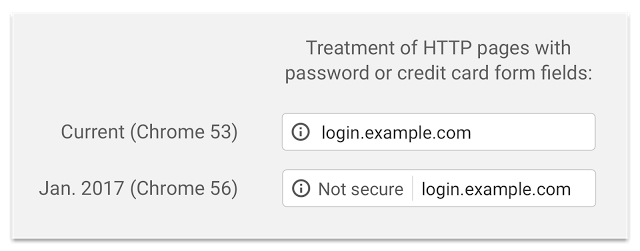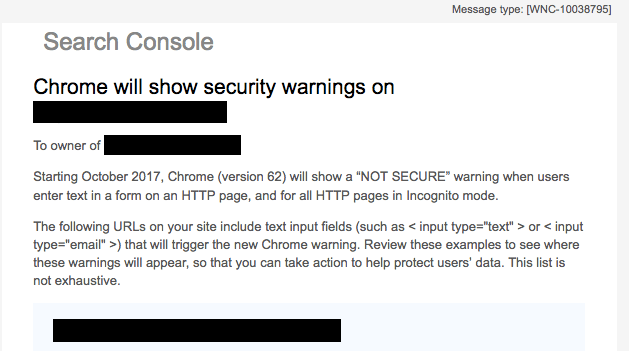Google Begins Campain Warning Forms Not Using HTTPS Protocol
Google has started sending warnings if your site uses forms that are not using HTTPS protocol. The warnings signal that starting in October they will be flagging your site as “not secure” in the address bar. If you’re still thinking about how HTTPS fits into your website architecture, might be time to get on that…
August 2014, Google released an article sharing their thoughts on how they planned to focus on their “HTTPS everywhere” campaign (originally initiated at their Google I/O event).
The premise of the idea was that every website, regardless of what it was doing, should be communicating securely between point A and point B. To help motivate users, it went right for the carotid artery by making it a ranking factor in search.
December 2015, Google adjusted their crawlers to start start prioritizing and indexing HTTPS pages by default. If you had HTTP / HTTPS, they would start giving more weight to your HTTPS pages.
January 2017, they updated Chrome 56 to flag input fields that were not using https. This helped educate and make users aware that their data was not being collected / transmitted securely.

August 2017, Google begins notifying website owners if their websites have forms that are running over non-HTTPS. If the website owner does not take action before October when a user visits their website they will be created with a “not-secure” warning in the URI section of the browser, extending the original warning restricted to the form.

Regardless of your personal feelings about HTTPS, it’s only a matter of time before the “non-secure” applies to any website running over HTTP, regardless of any data capture features on this site.
GETTING STARTED WITH HTTPS
There will be two issues that are inevitable as you get started:
1 – You’ll likely run into Mixed Content Warnings during the deployment
2 – You’ll likely experience a hit to your rankings as the searches shift from HTTP -> HTTPS. It will recover, don’t freak out. To help in the process submit a new sitemap including the new HTTPS links. Google provides a guide on how to do this via their Search Console.
Google has a simple breakdown of the core steps that will help point you in the right direction.
If you manage your own web server, and have the technical ability, take a look at LetsEncrypt; it’s a free, open, transparent Certificate Authority (CA) managed by the Internet Security Research Group (ISRG). LetsEncrypt is a non-profit with the simple goal of making SSL accessible to all website owners. They provide a simple Getting Started guide that will help you deploy the certificates to servers.
You also have the option to start a dialog with your host. They all have their own unique approach to handling SSL certificates. Some are free, some are paid, their real value however will come in what you’re getting. Free doesn’t mean free of effort, and paid doesn’t mean fully serviced.
Another option would be to start a dialog with your security provider. Many of them bundle SSL certificates into cloud security services and will help you get things configured and deployed.
Regardless of the route you choose, take a few moments to put a plan in place, make sure it allocates enough time for the change. Changing from HTTP to HTTPS can be a bit of headache if done blindly. If you’re not sure what your’e doing, consult your developer.

